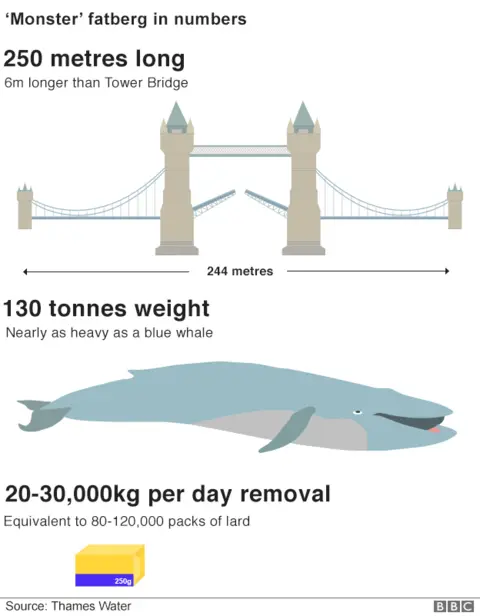London fatbergs 'fuelled by restaurant waste'
Most London restaurants and takeaways are failing to stop grease, oil and food going down the drain which can cause "fatbergs", it has been claimed.
Thames Water visited hundreds of outlets and found nine out of 10 did not have adequate systems for keeping waste out of sewers.
On Whitechapel Road, where a "monster" 130-tonne fatberg was found, none had a working grease trap, the firm said.
The utility said it was "staggered" by the findings.
Fatbergs form when fat, oil and other unflushable items such as wet wipes, nappies and condoms accumulate and congeal inside pipes.
The resulting mass can cause blockages which water companies spend millions of pounds each year to remove.
Thames Water's sewer network manager Stephen Pattenden said: "We're not suggesting anyone intentionally pours the contents of a fat fryer down the drain, but it's more about the gunk that comes from dirty plates, pots and pans."
He said a "simple, well maintained grease trap" was enough to prevent kitchen waste from entering sewers.
Restaurants which do not have proper systems in place will be visited again in several months, facing prosecution if they fail to make required changes.
The 250m-long fatberg discovered in Whitechapel's Victorian sewer tunnels was said to be among the largest ever found in London.
The previous record holder was described as a "bus-size" fatberg found in a sewer in Kingston-upon-Thames in 2013.
Officials warned residents not to flush household rubbish down the toilet in a bid to prevent further similar blockages.

